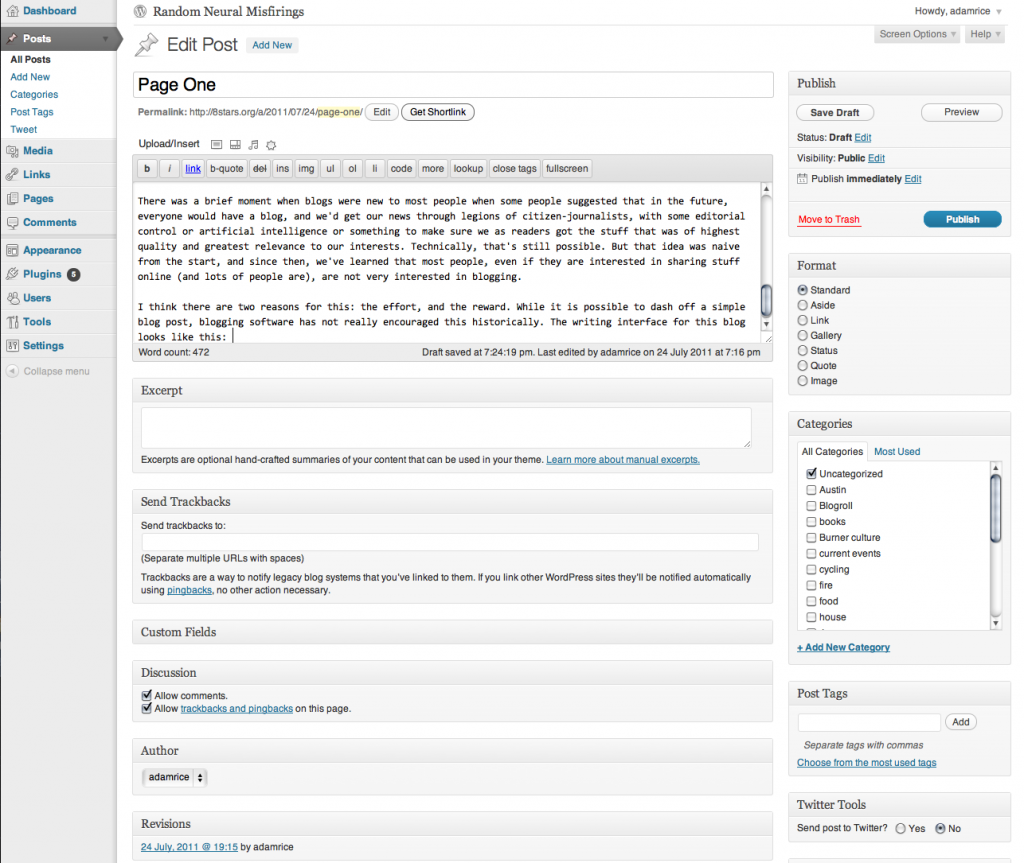Islands vs Continents
If you look at just one aspect of sharing information on the web, there are two approaches: islands and continents. Islands are bunch of individuals, each with their own corner of the web, where they publish whatever they want. Continents are where a bunch of individuals all sign up for user accounts and interact through that site’s back end. This post got me thinking about this, and this response got me thinking more about it.
Islands are anything that the user runs in their own web space: such as this blog or a self-hosted photo gallery. Continents are big destination sites like Facebook or flickr.
Continents do have their appeal: for one, they’re easier for the user to get started with.
More importantly, there are more ways to make money off them: advertising, membership fees, selling user data. With islands, the methods for monetization aren’t the same: you can sell the software, and maybe you can sell a support package to go along with it. The notorious difficulty of getting people to pay for anything on the web may explain why the software underlying islands tends to be open source, though there are exceptions. Beyond just the immediate revenue model, a popular website is exactly the sort of thing that its creators can hope to sell to one of the big boys for big, big money (like Instagram selling out to Facebook for [pinky to lip] one billion dollars). Software projects…not so much.
Continents have one huge disadvantage: most of the big ones are supported through advertising and the sale of user data, and as has been said many times, if you’re not paying for it, you’re not the customer, you’re the product. It is in Facebook’s interest to make their site appealing to the extent that it keeps us around long enough to show us more ads, but not necessarily in their interest to really do right by their users.
The advantages of islands may only appeal to nerds: you controls your data, how it looks, how it’s used. Nobody is selling advertising around your data.
In theory, there’s nothing preventing me from hosting my photos in my own web space, even though I don’t. Back in the old days, web space was doled out in such small parcels that it would have been unrealistic for me to throw everything up there. These days, that’s not such a big deal. But flickr, for all its faults and neglect at the hands of a company that doesn’t know what to do with it, still has features that I haven’t seen in self-hosted photo galleries. One of these is that your photos can be viewed in the context of photos by other people: other people can follow your photos can comment on them. You can post them to groups that are organized around a topic or theme. You can organize galleries of photos by other people. You can see other photos that have all been tagged Tokyo or whatever.
In short, because you’re on a continent, you don’t need any bridges to get around. This social connection is huge, and it’s the weak spot of islands. All the island software out there works on one island in isolation. It doesn’t include bridges to your neighbors.
Diaspora is a social network based on the island + bridges model. Perhaps I should say based on a “big island” model, since most pods (as they’re called) have a lot of users, but there are many pods and they all intercommunicate. This is a promising idea, but Diaspora gets discouragingly little use. I’ve got 37 contacts on Diaspora. Two of them use it. Part of this is a chicken-and-egg problem, but Facebook also has useful features (events and invitations, groups, etc) that Diaspora lacks.
The only things that Diaspora has going for it is that you actually are the customer (they run on donations), and you own your own data—stuff that a lot of people just don’t think that hard about. But it’s a big deal. Now that Facebook has gone public, it needs to justify itself to shareholders, and there will be even more tension between doing what’s right for its customers vs its users.
I want it both ways. I want to have control over my data, and not to be someone else’s product. And I also want to connect with my friends and with people I don’t even know yet.
The Diaspora guys have the right idea, and so does Brent Simmons: we don’t just need islands. We need bridges to connect them.
Update: This is the kind of thing I’m talking about

